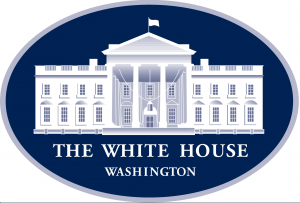 The White House recently released their list of 100 examples of President Obama’s leadership in science, technology, and innovation. The list includes many computing related commitments such as supported millions of students with ConnectEd, created a new pipeline for well-paying tech jobs, and called for computer science education for all. The Computing Community Consortium (CCC) has contributed to many of these examples.
The White House recently released their list of 100 examples of President Obama’s leadership in science, technology, and innovation. The list includes many computing related commitments such as supported millions of students with ConnectEd, created a new pipeline for well-paying tech jobs, and called for computer science education for all. The Computing Community Consortium (CCC) has contributed to many of these examples.
- #34 is the National Robotics Initiative (NRI). In June 2011, the Administration established the National Robotics Initiative to spur research and development in a variety of robotics applications, including healthcare, agriculture, manufacturing, space exploration, and national security. The CCC’s 2008 Robotics Roadmap was a key catalyst for the NRI and the CCC recently released a follow up whitepaper, titled Next Generation Robotics, which addresses the progress of the NRI and the future of robotics research.
- #45 is the BRAIN Initiative (BRAIN). In April 2013, President Obama launched the BRAIN Initiative – a joint program with funding through the Defense Advanced Research Projects Agency (DARPA), the National Institutes of Health (NIH), and the National Science Foundation (NSF) – to develop neuro-technologies that could uncover new ways to treat, prevent, and cure brain disorders such as Alzheimer’s, Parkinson’s, schizophrenia, autism, epilepsy, and traumatic brain injury. In December 2014, the CCC co-hosted the BRAIN workshop with NSF to bring together brain researchers and computer scientists for a scientific dialogue aimed at exposing new opportunities for joint research in the many exciting facets, established and new, of the interface between the two fields. The workshop produced the report, The New Age of Computing and the Brain.
- #76 addresses police body worn cameras through the Police Data Initiative, launched in May 2015. The CCC released a white paper on body-worn cameras for law enforcement in August 2015 that addresses the technological concerns, determines potential 2-, 5-, and 10-year timelines, and offers recommendations for application.
- #79 is 2015’s National Strategic Computing Initiative (NSCI), which proposes a multi-agency strategic vision and Federal investment strategy in high-performance computing (HPC). HPC is a major issue in the computing research landscape and the CCC has assembled the Convergence of Data and Computing task force to address the intersections of Big Data, High Performance Computing, and the future of HPC. The CCC has released a number of papers related to this topic; notably 2012’s 21st Century Computer Architecture, 2015’s Opportunities and Challenges for Next Generation Computing and 2016’s Accelerating Science: A Computing Research Agenda.
- #80 is Big Data, which the CCC has been working on since it’s beginnings. The very first CCC visioning activity was a workshop on Big Data Computing in 2008, followed by a set of whitepapers written in 2010. In 2012, the Administration launched the Federal Big Data Initiative which currently includes the four NSF supported Big Data Regional Innovation Hubs (BD Hubs). The CCC has partnered with the Hubs on a program to support Industry-Academic collaboration. The BD Hubs are charged with ensuring participation from diverse institutions and strengthening partnerships based on their specific regional needs and which will enhance the research of early career academic researchers, and which will benefit the Innovation Hub. Featured activities include workshops, faculty internships, student internships, site visits, hackathons, and lecture series. Learn more about the BD Hubs here and check out the CCC’s white paper on the need for Industry-Academic collaboration here.
- #81 is Smart Cities, through the Administration’s Smart Cities Initiative. The CCC’s Computing in the Physical World Task Force has released a recent paper about smart communities and the internet of things (IoT), as well as a white paper more broadly addressing challenges with IoT.
- #82 focuses on Artificial Intelligence (AI). Earlier this spring OSTP began a series of workshops on AI, including one co-hosted by the CCC and AAAI on Artificial Intelligence for Social Good. In this workshop, the currently successful deployments and the future potential uses of AI in various areas essential for social good – including but not limited to urban computing, health, environmental sustainability, and public welfare – were presented and discussed. There will be a corresponding whitepaper released in the next few months. Connected to this is example #71 – expanded use of technology to fight wildlife trafficking. Two presentations at the AI for Social Good workshop addressed the use of computing technology and AI to prevent poaching and protect wildlife.
See the impact report to see all 100 examples. You can find out more about the CCC on our website!









